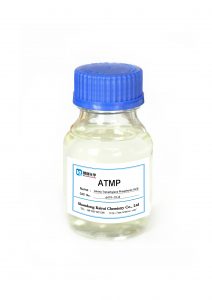Arch biocides are chemical agents used primarily in water treatment systems and industrial applications to control the growth of harmful microorganisms such as bacteria, algae, fungi, and molds. These biocides play a critical role in maintaining the performance, safety, and longevity of various systems, including cooling towers, pipelines, boilers, and wastewater treatment facilities. The main functions of Arch biocides (or biocides in general) can be summarized as follows:
1. Microbial Growth Control
- Primary function: The main purpose of Arch biocides is to control the growth of bacteria, algae, fungi, and other microorganisms in industrial water systems. Uncontrolled microbial growth can lead to a variety of issues, including biofilm formation, which can clog pipes, reduce heat transfer efficiency, and cause system corrosion.
2. Biofilm Prevention
- Biofilms are layers of microorganisms that attach to surfaces, such as pipes and heat exchangers, and are typically difficult to remove. Arch biocides prevent the formation of biofilms by killing or inhibiting microbial growth, thereby reducing the risk of biofilm buildup. Biofilms can harbor harmful bacteria, including Legionella, which can lead to serious health risks.
3. Corrosion Prevention
- Microbial growth can accelerate corrosion in metal components of water systems. The presence of certain bacteria and fungi can produce acids or other byproducts that cause the metal surfaces to corrode more rapidly. By controlling microbial growth, Arch biocides help to reduce corrosion and extend the lifespan of equipment.
4. Algae Control
- Algae can grow in open water systems such as cooling towers and swimming pools, leading to issues such as clogged filters, reduced system efficiency, and water discoloration. Arch biocides specifically target algae, preventing their growth and maintaining water clarity and cleanliness.
5. Improved System Efficiency
- By controlling microbial populations, Arch biocides help maintain optimal performance of industrial systems. Microorganisms like bacteria and algae can interfere with heat exchange efficiency, clog filters, and reduce the overall performance of equipment. Regular use of biocides ensures systems run smoothly and efficiently, reducing the need for costly maintenance and repairs.
6. Prevention of Odor
- Certain bacteria and fungi can produce foul odors in water systems, particularly in closed-loop cooling systems or wastewater treatment facilities. Arch biocides help to eliminate these odors by controlling microbial activity that leads to the formation of malodorous compounds.
7. Health and Safety Compliance
- In systems such as cooling towers, the presence of harmful pathogens like Legionella can pose serious health risks, particularly in environments like hospitals, industrial plants, and public swimming pools. By controlling the growth of harmful microorganisms, Arch biocides help to ensure health and safety compliance and prevent outbreaks of waterborne diseases.
8. Water Quality Maintenance
- In industrial water systems, maintaining high water quality is crucial for effective operation. Microbial growth can degrade water quality and cause problems such as cloudiness, color changes, and foul smells. Arch biocides help maintain clean, clear, and safe water by preventing microbial contamination.
9. Cost-Effective Maintenance
- By preventing the issues caused by microbial growth (like clogging, corrosion, and biofilm), Arch biocides reduce the need for frequent and costly maintenance. They help extend the lifespan of equipment and reduce downtime, which in turn lowers overall operating costs.
10. Environmental Impact Reduction
- Arch biocides are formulated to provide targeted action against specific microorganisms, meaning they can be more environmentally friendly compared to broad-spectrum, non-targeted chemicals. In some cases, they are designed to break down into non-toxic byproducts, reducing their long-term environmental impact.
Types of Arch Biocides:
- Oxidizing biocides: Such as chlorine or bromine, which kill microorganisms by oxidizing their cell structures.
- Non-oxidizing biocides: Such as isothiazolinones or glutaraldehyde, which disrupt microbial metabolism or cellular structures without relying on oxidation.
Conclusion:
In summary, the main functions of Arch biocides are to control microbial growth, prevent biofilm formation, reduce corrosion, control algae, maintain system efficiency, improve water quality, ensure health and safety, and reduce overall maintenance costs. These functions are essential for maintaining the smooth operation and longevity of industrial water systems, cooling towers, and other environments where microbial contamination can be a problem.


